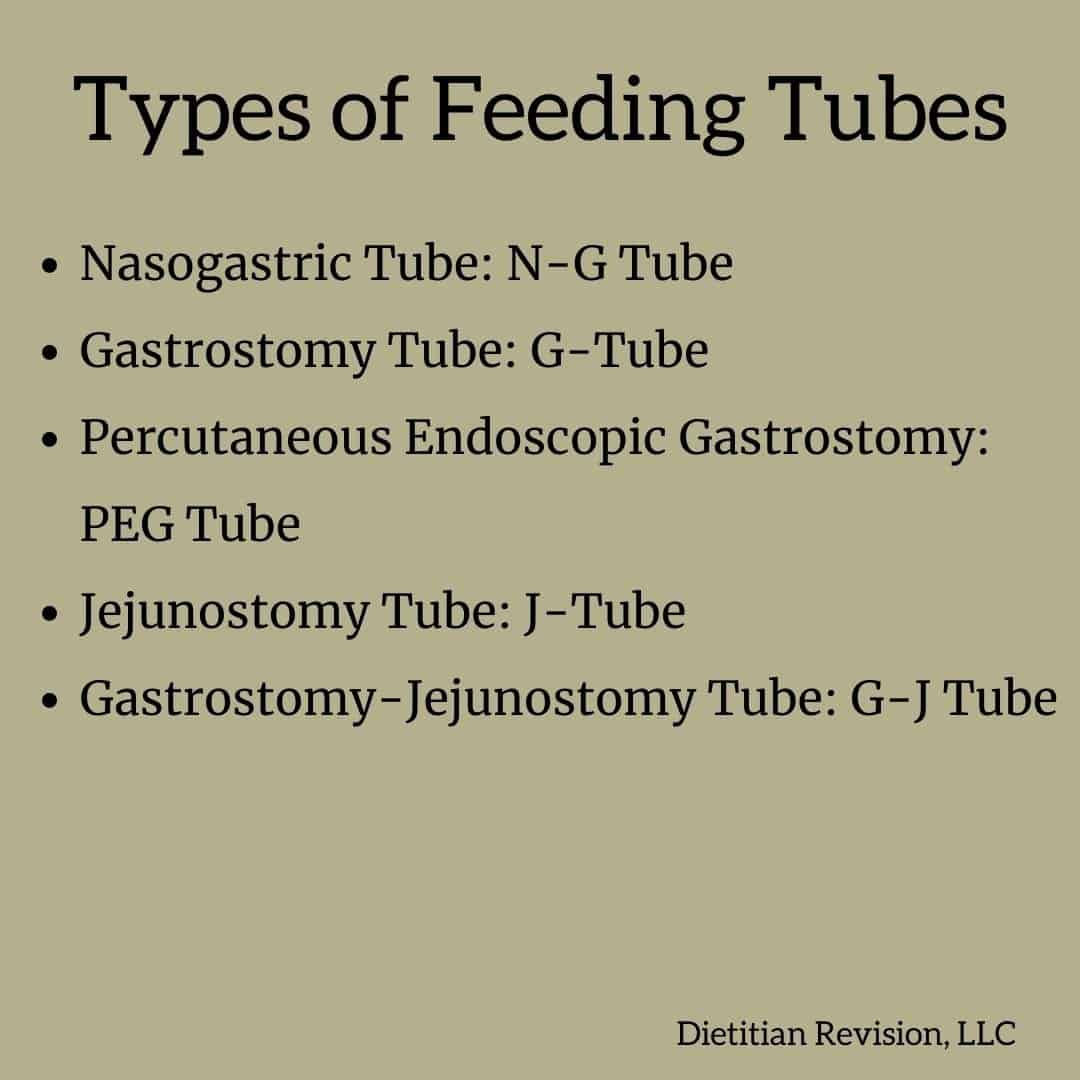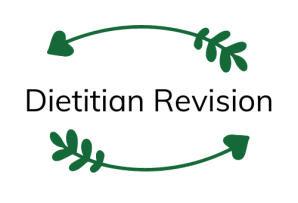Tube feedings (enteral nutrition) are an alternative route of nutrition, which may be pursued when oral nutrition intake is inadequate or not possible.
Not everyone is a candidate for a feeding tube. This is especially true in the geriatric population.
This article explains the basics of feeding tubes and methods of feeding, as well as, explores the risks vs. benefits of feeding tubes in the elderly.
*This article contains affiliate links. I may earn a commission from qualifying purchases.
Reasons for Feeding Tubes in the Elderly
Tube feeding may be considered when the gut is functioning, but nutritional needs are not being met orally. Conditions causing inability to swallow, malnutrition, increased nutritional needs, or overall inadequate oral intake may warrant tube feeding.
- Cancer, especially head & neck cancers when swallowing is impacted
- Dysphagia: difficulty swallowing
- Strokes that cause swallowing problems
- Dementia
- Parkinson’s disease
- Degenerative diseases such as Huntington’s disease, Multiple Sclerosis (MS), Amyotrophic Lateral Sclerosis (ALS)
- Failure to Thrive (FTT)
Types of Feeding Tubes
The type of feeding tube placed varies depending on the individual’s situation; accounting for potential duration and current conditions.

Nasogastric Tube “NG Tube”
This type of feeding tube is inserted into the nose and down to the stomach. This is used for temporary tube feeding, typically in a hospital setting.
Gastrostomy Tube “G-tube or PEG Tube”
A gastrostomy tube is inserted into the stomach surgically or a PEG (percutaneous endoscopic gastrostomy) tube is inserted using local anesthesia and endoscopy via the mouth, into the stomach and out a small incision in the abdomen.
PEG tubes may be inserted at the hospital or an outpatient setting. These are more common when a long term route of nutrition is needed.
Gastrostomy-Jejunostomy Tube “G-J Tube”
G-J tubes are typically inserted after complications with PEG tubes arise, such as severe reflux, aspiration (tube feeding going into the lungs), recurring abdominal distention, or other intolerance issues.
This type of tube is surgically inserted into the stomach. A portion of the tube stops in the stomach, while another, smaller tube continues down into the small intestine.
Two ports are present to access the different tubes. Medications will frequently be administered in the gastric port or “g-port” into the stomach. The tube feeding will be administered in the j-port into the small intestine (jejunum).
Bypassing the stomach decreases the risk for aspiration, however other complications can occur. Dumping syndrome can occur since “food” is going directly into the small intestine, causing diarrhea and other gastrointestinal (GI) issues.
It is also possible to have only a jejunostomy tube (J-tube), without an additional tube to the stomach.
Methods of Feeding
Medical conditions and quality of life considerations direct the selection of administration method.
Continuous Feeding
“Ready to hang” tube feeding formulas are administered using a pump that is programmed with the recommended rate to provide appropriate nutrition.
This is the most common method of feeding in healthcare settings. It is also common to start with this method to ensure tolerance, as the rate of administration can be gradually increased.
Bolus Feeding
Tube feeding is provided via a large bolus syringe relatively quickly at certain intervals throughout the day. This allows people the freedom of not being attached to a pump, as with continuous feedings.
This is the most common at home method for tube feeding administration for those managing feeding tubes in the home. Bolus feedings offer more flexibility with timing and scheduling.
Bolus feedings are utilized in long term care facilities in some situations as well. This is typically the preferred method for supplemental feedings, for those who eat orally in addition to their tube feedings.
It is important to note that bolus feedings are not an option through a J-tube. Bolus feedings also are more likely to cause nausea, vomiting, diarrhea, and aspiration than other feeding methods.
Gravity Feedings
Continuous feedings and intermittent feedings may be administered via gravity drip versus the above mentioned techniques.
Tube Feeding Formulas
The appropriate tube feeding formula is individualized depending on nutritional needs, medical conditions, tolerance, method of feeding, etc.
Formulas available vary among healthcare facilities and home care settings depending on which companies are used to supply products and insurance coverage.
Abbott and Nestle products are the most commonly used in healthcare settings. With plant based diets growing in popularity, Kate Farms* has developed a line of plant based tube feeding formulas.

Standard Formulas
The most readily available tube feeding formulas used for basic nutritional needs. These formulas meet the needs of many requiring tube feeding and come in various calorie concentrations.
While these are the most inexpensive formulas, they do require normal digestion and absorption. Examples include JevityⓇ by Abbott, IsosourceⓇ by Nestle, or Standard by KateFarms*.
High Fiber Formulas
Similar to standard formulas, however, they have added fiber to assist with bowel function. These formulas are typically well tolerated, however adequate fluid is needed. Examples include FibersourceⓇ HN (Nestle) and JevityⓇ (Abbott).
Concentrated Formulas
Concentrated tube feeding formulas are similar to standard formulas, however have higher calorie amounts for a smaller volume. They can be better tolerated since a smaller amount is needed to meet nutritional needs.
These formulas have smaller water content so the risk for dehydration is higher. They are also thicker so clogging can be more of an issue, especially for smaller tubes, such as J-tubes.
Examples of concentrated formulas are NutrenⓇ 2.0 by Nestle and TwoCalⓇ HN by Abbott.
Disease Specific Formulas
Some tube feedings are formulated for specific disease states, such as kidney disease, diabetes, respiratory failure, etc. The nutrients in these formulas are adjusted to the nutritional requirements of these conditions.
These formulas are typically more expensive. Some are controversial whether the benefits really outweigh the financial burden.
Examples of disease specific tube feeding formulas include:
- Diabetes: Diabetisource ACⓇ (Nestle), GlucernaⓇ (Abbott)
- Kidney Disease: NovasourceⓇ Renal (Nestle), NeproⓇ, or SuplenaⓇ (Abbott)
- Respiratory Diseases: NutrenⓇ Pulmonary (Nestle), PulmocareⓇ (Abbott)
Elemental Formulas
Elemental tube feeding formulas are designed for those with impaired digestion and/or absorption. Nutrients are more broken down in these formulas for easier digestion and absorption.
These formulas are more expensive, and therefore less utilized. Examples include OsmoliteⓇ, VitalⓇ (Abbott), PeptamenⓇ (Nestle), Peptide (KateFarms*).
Feeding Tube Complications
While tube feedings allow additional nutrition to be provided, they do not come without potential risks. Potential complications include:
- Infection
- Diarrhea
- Aspiration
- Tube dislodgement
- Feeding tube clogging
- Leakage from tube site
- Nausea and vomiting
- Abdominal distention
- Pain
- Refeeding syndrome: when carbohydrates are introduced too quickly in malnourished individuals resulting in potentially life threatening electrolyte imbalance.
- Medication interactions
- Over or under hydration
- Tube replacement or rehospitalizations
Ethical Considerations
Enteral nutrition is typically considered a last resort when nutritional needs are unable to be met by mouth. Those with terminal conditions must factor in quality of life and weigh the risks versus benefits when considering tube feeding.
Legal documents called living wills can be completed expressing one’s wishes regarding life prolonging measures, including artificial nutrition and hydration by means of tube feeding. It is ideal to make these tough decisions in advance while mental faculties are still intact.
In the event that you are unable to make your own medical decisions and a living will is not present, this decision would be made by the appointed power of attorney or health care proxy.
Everyone is not a candidate for enteral nutrition. For many, tube feeding does not prolong or improve quality of life. This is particularly true for those with progressive diseases, such as dementia.
Tube feedings may cause more complications than benefits in those with diseases in which the brain and/or digestion is affected. When absorption is impacted the body is unable to use nutrients properly, even when provided adequately through a tube feeding.
People with cognitive impairment may not understand the reason for this foreign object in their body, which may cause increased anxiety and/or lead to tube dislodgment.
While these can be difficult conversations to have, it is important to weigh the risks versus the benefits and make your wishes known.
Click here to get your copy of this article sent right to your inbox.



